Electrical resistance of certain materials, known as superconductors, changes abruptly from a nonzero value of zero as their temperature is lowered below a critical temperature TC(0). An interesting property of super conductors is that their critical temperature becomes smaller than TC(0) if they are placed in a magnetic field, i.e., the critical temperature TC(B) is a function of the magnetic field strength B. The dependence of TC(B) on B is shown in the figure.
 .
.
In the graphs below, the resistance R of a superconductor is shown as a function of its temperature T for two different magnetic fields B1(solid line) and B2 (dashed line). If B2 is larget than B1 which of the following graphs shows the correct variation of R with T in these fields?
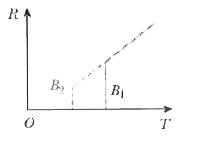
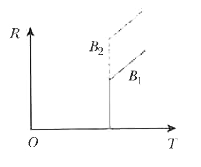
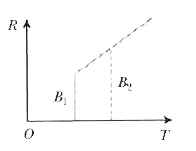
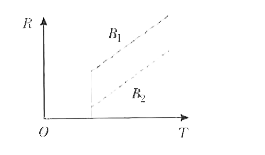
The correct Answer is:A
Step by step video, text & image solution for Electrical resistance of certain materials, known as superconductors, changes abruptly from a nonzero value of zero as their temperature is lowered below a critical temperature T_(C) (0). An interesting property of super conductors is that their critical temperature becomes smaller than T_(C) (0) if they are placed in a magnetic field, i.e., the critical temperature T_(C) (B) is a function of the magnetic field strength B. The dependence of T_(C) (B) on B is shown in the figure. . In the graphs below, the resistance R of a superconductor is shown as a function of its temperature T for two different magnetic fields B_1(solid line) and B_2 (dashed line). If B_2 is larget than B_1 which of the following graphs shows the correct variation of R with T in these fields? by Physics experts to help you in doubts & scoring excellent marks in Class 12 exams.
Updated on:21/07/2023Topper's Solved these Questions
- CURRENT AND RESISTANCEBook:RESNICK AND HALLIDAYChapter:CURRENT AND RESISTANCEExercise:Practice Questions (Matrix-Match)
Explore 9 Videos
- CURRENT AND RESISTANCEBook:RESNICK AND HALLIDAYChapter:CURRENT AND RESISTANCEExercise:Practice Questions (Integer Type)
Explore 3 Videos
- CURRENT AND RESISTANCEBook:RESNICK AND HALLIDAYChapter:CURRENT AND RESISTANCEExercise:Practice Questions (Single Corret Choice Type)
Explore 39 Videos
- CIRCULAR MOTIONBook:RESNICK AND HALLIDAYChapter:CIRCULAR MOTIONExercise:CHECK POINTS
Explore 6 Videos
- ELASTICITYBook:RESNICK AND HALLIDAYChapter:ELASTICITYExercise:PRACTICE QUESTIONS (Integer Type)
Explore 3 Videos
Similar Questions
Knowledge Check
Electrical resistance of certain materials, known as superconductors, changes abruptly from a nonzero value of zero as their temperature is lowered below a critical temperature TC(0). An interesting property of super conductors is that their critical temperature becomes smaller than TC(0) if they are placed in a magnetic field, i.e., the critical temperature TC(B) is a function of the magnetic field strength B. The dependence of TC(B) on B is shown in the figure.
 .
.
A superconductor has TC(0)=100K. When a magnetic field of 7.5 Tesla is applied , its TC decreases to 75 K. For this material one can difinitely say that whenAB=5Tesla,TC(B)=80KBB=5Tesla,75K<TC(B)<100KCB=10Tesla,75<TC(B)<100KDB=10Tesla,TC(B)=70K.Electrical resistance of certain materials, known as superconductors , changes abruptly from a non-zero value to zero as their temperature is lowered below a critical temperature Tc(0) An interesting property of superconductors is that their critical temperature becomes smaller than Tc(0) if they are placed in a magnetic field, that is, the critical temperature Tc(B) is a function of the magnetic field strength B. The dependence of Tc(B) on magnetic field is shown in the below figure .
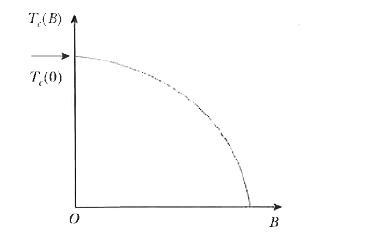
A superconductor has Tc(0)=100K. When a magnetic field of 7.5T is applied, its Tc decreases to 75K. For this material, one can definetly say that whenAB=5T,TC(B)=80KBB=5T,75K<Tc(B)<100KCB=10T,75K<Tc<100KDB=10T,Tc=70KElectrical resistance of certain materials, known as superconductors, changes abruptly from a nonzero value to zero as there is lowered below a critical temperature TC(0). An interseting property of supercoductors is that their critical temperature becomes smaller than TC(0) if they are placed in a magnetic field , i.e., the critical temperature TC(B) on B si shown in the figure.
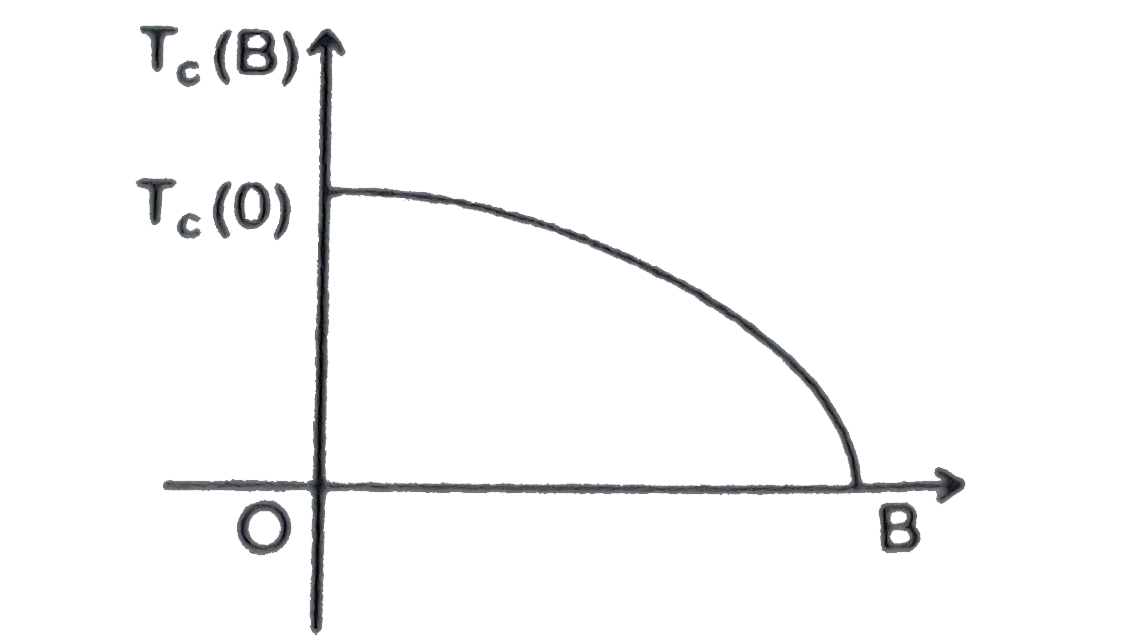
A superconductor has TC(0)=100K. When a magnetic field of 7.5 Tesla is applied , its TC decreases to 75 . For this material one can definitely say that when :AB=5 Tesla, TC(B)=80KBB=5 Tesla,75K<TC(B)<100KCB=1 Tesla, 75K<TC(B)<100KDB=10 Tesla, TC(B)=70K
At critical temperature surface tension becomes
View SolutionCritical temperature (TC) will be maximum for the following gas ?
View SolutionThe critical temperature of the gas is the temperature
View SolutionThe critical temperature of a gas is that temperature:
View SolutionThe alternate discs of iron and carbon, having same area of cross-section are cemented together to make a cylinder whose temperature coefficient of resistivity is zero. The change in temperature in two alternate discs is same. The ratio of their thickness and ratio of heat produced in them is found out. The resistivity of iron and carbon at 20∘C are 1×10−7and3×10−5Ωm and their temperature coefficient of resistance are 5×10−3∘Cand−7.5×10−4∘C, respectively, Thermal expansion is neglected. Here, △R1+△R2=0 (where △R1,and△R2, are the increase in resistances of iron and carbon, respectively, with the rise in temperature) because combined temperature coefficient of resistivity is given as zero.
A copper wire is stretched to make it 1% longer. The percentage change in its resistance is Electrical resistance of certain materials, known as super conductors changes abruptly from a non zero value to zero as their temperture is lowered below a critical temperature Tc(0) An interesting property of superconductors is that their critical temperature becomes smaller than Tc(0) if they are placed in a magnetic field, that is, the critical temperature Tc(B) is a function of the magnetic field strength B. The dependence of Tc(P) on magnetic field is shown in the below figure.
View Solution